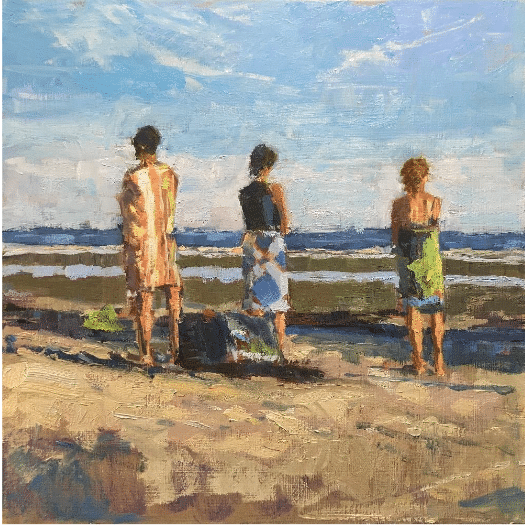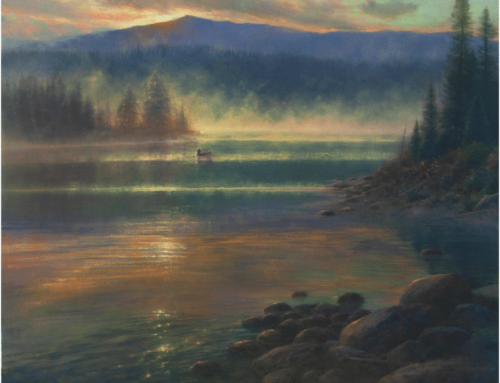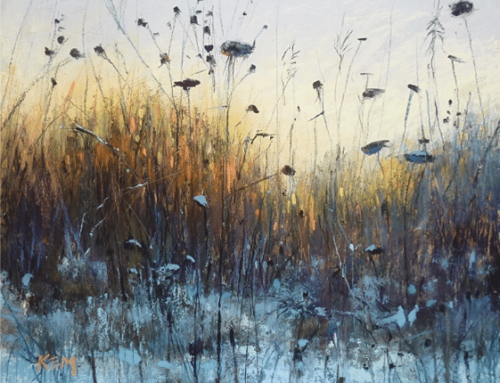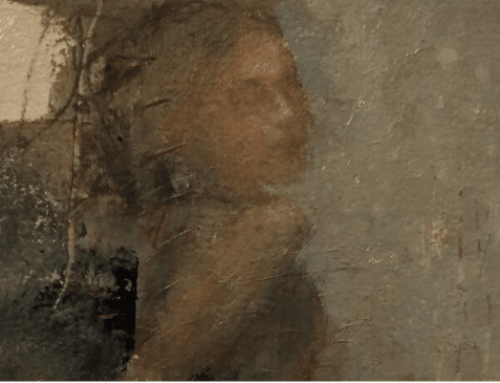By Guest Contributor Barb Walker
Do you ever wonder if the painting you are working on is heading in the direction you want it to? Is it ok? Does it need something?
At some point (like most artists) I realized I needed to come up with ways to view my paintings other than by just standing in front of them.
One of the best tools I have found to help me read paintings is a mirror. I have a long dressing mirror on the inside of the closet door in my tiny studio. All I have to do is swing the door open and that way I can glance over while I’m painting and get a more objective look at how it’s going. I use another mirror in a nearby bathroom as well.
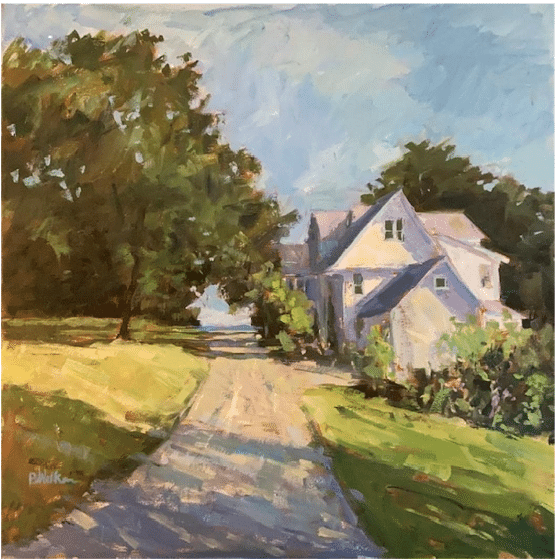
Barb Walker, “I See the Sea,” 24 x 24 in., oil on linen
Viewing a painting reflected in a mirror can quickly reveal bad angles, crooked objects, weak
values, or even a pleasant surprise.
This is a fairly new habit for me. I read about it for years, and at times would hold up a small
hand mirror or try the black screen on the phone trick, but for some reason could not get them to help me see. 2020 yielded a bonus of online demonstrations and one in particular made
something click. I noticed, in one painter’s studio, a full-length mirror. The artist would turn now and then and glance at the painting’s reflection while working. Click! How easy would it be to just open the closet door and angle it so I could use the mirror to reflect what was on my easel? Yep. Very easy. And really helpful!
I am also continually moving away from my easel while painting, and for me that means leaving the room and walking back in to give it a side glance. I stand in the furthest corner of my studio and look from there.
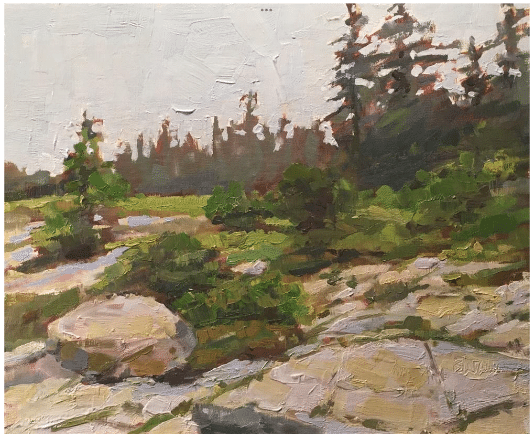
Barb Walker, “Maine Day,” 10 x 12 in., oil
When I move it to the ‘gallery’ – a nickname for the ledge in the bathroom – I leave that room too and walk in from the hall, glancing at other things on the walls before turning my head towards the painting.
Sounds goofy, doesn’t it? But sometimes that’s all it takes to have the flaws (or the good things) jump out.
Spending 20 minutes or longer working on a painting, I find I can simply become too ‘close’ to it. Encouraged by nice colors, fancy marks, and well-rendered images I can lose sight of the overall picture.
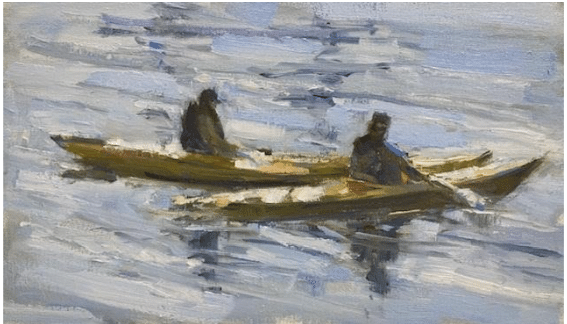
Barb Walker, “Morning Out,” 7 x 12 in., oil on canvas
Simply taking a photo of a painting shows me things I didn’t see before. I bet nearly all of us had that moment when we decide, “it is finished! Now it just needs a beauty shot!” Can’t tell you how many times I think I’ve finally gotten a good picture of a painting and – poof! – there it is:
“What is that purple glob in the sky?” “Can’t leave that clump of leaves hanging out there attached to nothing but thin air!” Back to the easel.
I’ve heard that a painting should make you want to walk across the room for a closer look and once you’re there the brushwork should make it worth the trip. Here’s to whatever it takes to make paintings worth the trip across the room!
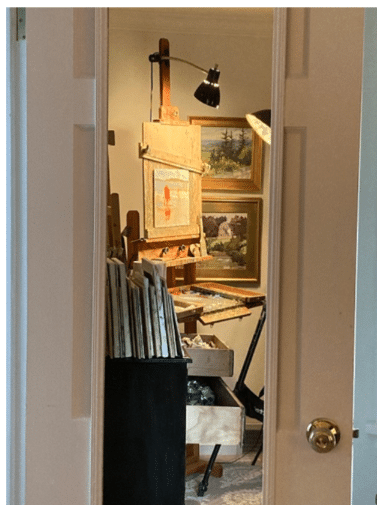
Room Full of Mirrors: No studio too tiny for reflection!

